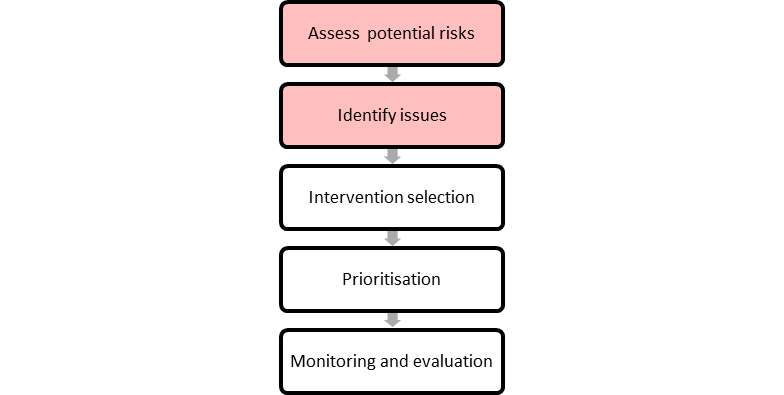
Road Safety Manual
A manual for practitioners and decision makers
on implementing safe system infrastructure!

Road Safety Manual
A manual for practitioners and decision makers
on implementing safe system infrastructure!
The assessment of potential risks and identification (or ‘diagnosis’) of issues are the first steps of the risk assessment process introduced in Infrastructure Safety Management: Policies, Standards, Guidelines and Tools (Figure 10.1). This chapter discusses methods for identifying high risk locations, and the ways that different sources of data can be analysed to assess the causes of this risk.

The traditional approach used in the identification of risk is the analysis of historical crash data. This approach is still very relevant, but other sources of information used in the risk assessment process can lead to improvements and better results. The proactive approach is important in all countries, but particularly in locations where crash data may be of poor quality and in locations where new infrastructure will be built. Proactive approaches are being increasingly used to supplement historical crash data.
The focus of this manual is on the elimination of death and serious injuries, as these are the crash types that have the greatest societal impact. However, identification of high risk locations involving death and serious injury does not just involve analysis of fatal and serious injury crash data. Other sources of information can also be used to identify likely locations where serious injury or death may occur.
The following section provides brief information on project- and programme-level approaches to risk assessment, while Crash-based Identification (‘Reactive’ Approaches) discusses crash-based methods for identifying and assessing risk. Proactive Identification provides information on the proactive approaches, including impact assessment, road safety audit and road safety inspection Combining Crash Data and Road Data brings both the reactive and proactive approaches together to discuss an integrated approach to assessing risk.
Guidance documents on the assessment of risk are available, and should be adopted by all countries and embedded within core business. Training in the use of the following tools should be provided:
As a priority, assessment should be undertaken on high risk routes and corridors (see Belize case study in Chapter 10.2), utilising crash data were available (Crash-based Identification (‘Reactive’ Approaches)) as well as information on safety-related road elements (e.g. through safety audit and road assessment programmes – see Proactive Identification).